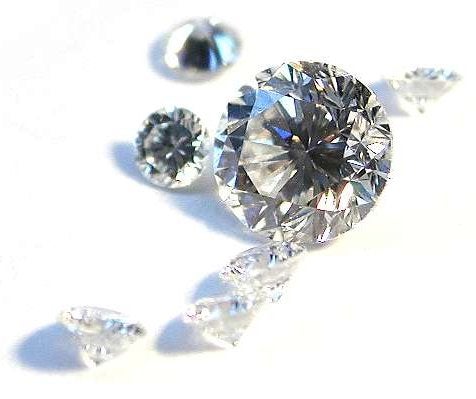Researchers Entangle Two Millimeter-Sized Diamonds, A Huge Leap in the Scale of Quantum Entanglement
Quantum entanglement, the spooky action at a distance that promises to be so useful for things like high-powered computing and...

Quantum entanglement, the spooky action at a distance that promises to be so useful for things like high-powered computing and security, is generally considered a function of the tiny world. It’s easy — OK, not easy, but relatively practical nowadays — to take two particles or two microscopic things and intertwine their fates. Now for the first time, scientists have accomplished quantum entanglement on the macro scale, entangling two millimeter-sized diamonds.
The findings, published in this week’s issue of Science, are a potential major leap for both quantum and classical mechanics. It’s the first time entanglement has been achieved between two fairly large objects — and at room temperature to boot.
As regular readers know, entanglement is the process of connecting two separate things, be they photons or nanoscale objects, so that they behave the same no matter their distance apart. What happens to one particle also happens to the other, even if they are separated by the entire universe.
Researchers at Oxford University took two small diamonds, about 3 millimeters square and 1 millimeter thick. They exposed them to incredibly short bursts — about 100 femtoseconds — of laser light, in a method called ultra fast pump probe spectroscopy. What happened next is complicated: The light induced some vibration in the lineup of the molecules in the diamond crystals. These inherent oscillations (present in all atoms, they’re just being taken advantage of here) are known as phonon modes. The pulse excited one phonon mode in both of the diamonds, and also produced two photons, which were scattered by the diamonds and which would be used to entangle the phonon states. Then the scattered photons were brought together, using a complicated setup involving a beam splitter and single-photon detectors.
The two diamonds were about half a foot apart, but when one of the photons was detected, the two diamonds were sharing a phonon. In other words, what happened to one diamond happened to the other. The researchers confirmed this by working backward, de-exciting the phonon and emitting another photon, which was itself detected. Entanglement lasted about 7 picoseconds, so it’s too short to be used in a quantum computer or other device — at least for now.
“The two diamond samples coherently shared one phonon, which is the hallmark of a quantum-entangled state,” explains L.-M. Duan, a physicist at the University of Michigan who wrote a perspective paper accompanying the Science paper. “These results provide a striking example that entanglement is not particular to microscopic particles but can manifest itself in the macroscopic world, where it could be used in future studies that make fundamental tests of quantum mechanics.”